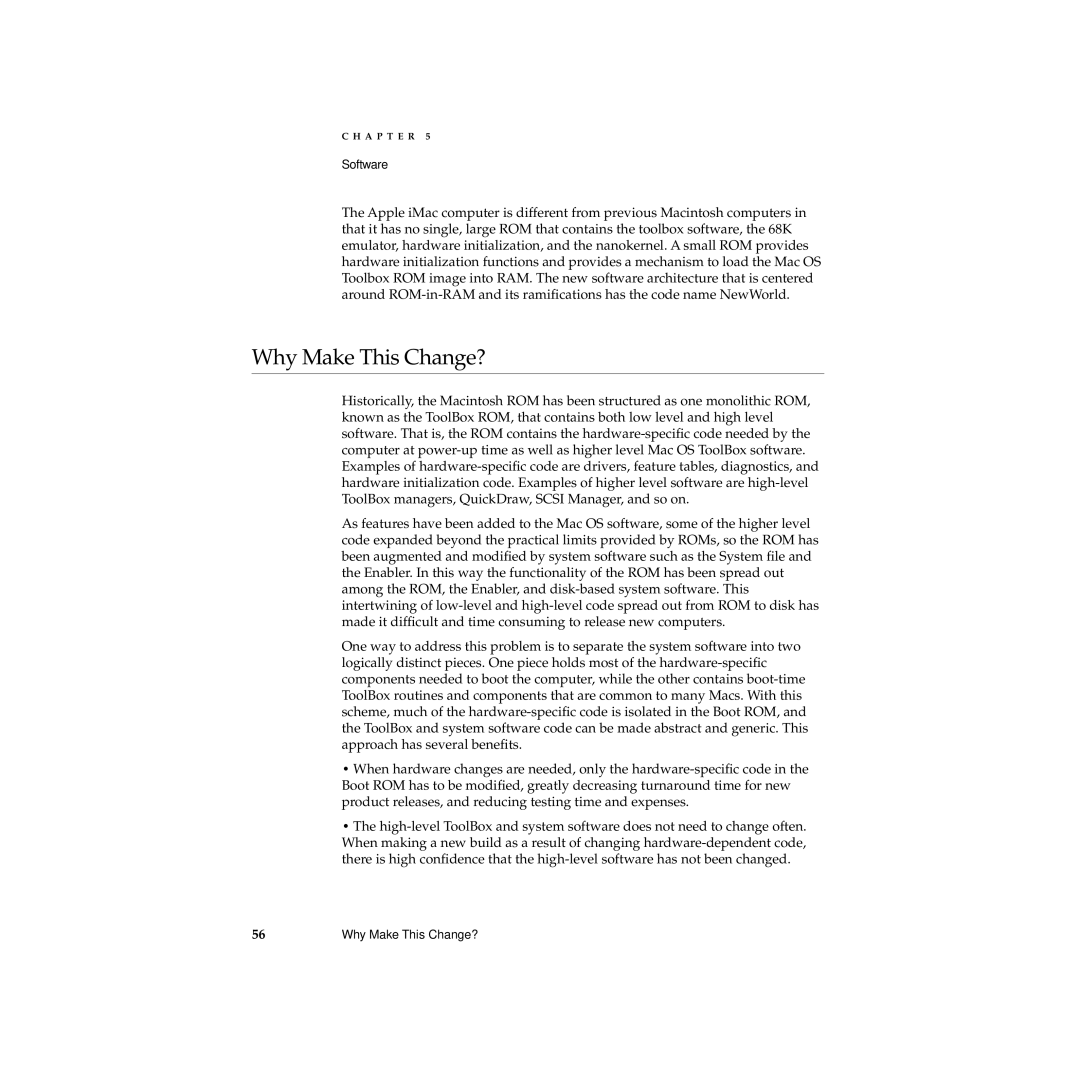C H A P T E R 5
Software
The Apple iMac computer is different from previous Macintosh computers in that it has no single, large ROM that contains the toolbox software, the 68K emulator, hardware initialization, and the nanokernel. A small ROM provides hardware initialization functions and provides a mechanism to load the Mac OS Toolbox ROM image into RAM. The new software architecture that is centered around ROM-in-RAM and its ramifications has the code name NewWorld.
Why Make This Change?
Historically, the Macintosh ROM has been structured as one monolithic ROM, known as the ToolBox ROM, that contains both low level and high level software. That is, the ROM contains the hardware-specific code needed by the computer at power-up time as well as higher level Mac OS ToolBox software. Examples of hardware-specific code are drivers, feature tables, diagnostics, and hardware initialization code. Examples of higher level software are high-level ToolBox managers, QuickDraw, SCSI Manager, and so on.
As features have been added to the Mac OS software, some of the higher level code expanded beyond the practical limits provided by ROMs, so the ROM has been augmented and modified by system software such as the System file and the Enabler. In this way the functionality of the ROM has been spread out among the ROM, the Enabler, and disk-based system software. This intertwining of low-level and high-level code spread out from ROM to disk has made it difficult and time consuming to release new computers.
One way to address this problem is to separate the system software into two logically distinct pieces. One piece holds most of the hardware-specific components needed to boot the computer, while the other contains boot-time ToolBox routines and components that are common to many Macs. With this scheme, much of the hardware-specific code is isolated in the Boot ROM, and the ToolBox and system software code can be made abstract and generic. This approach has several benefits.
•When hardware changes are needed, only the hardware-specific code in the Boot ROM has to be modified, greatly decreasing turnaround time for new product releases, and reducing testing time and expenses.
•The high-level ToolBox and system software does not need to change often. When making a new build as a result of changing hardware-dependent code, there is high confidence that the high-level software has not been changed.
